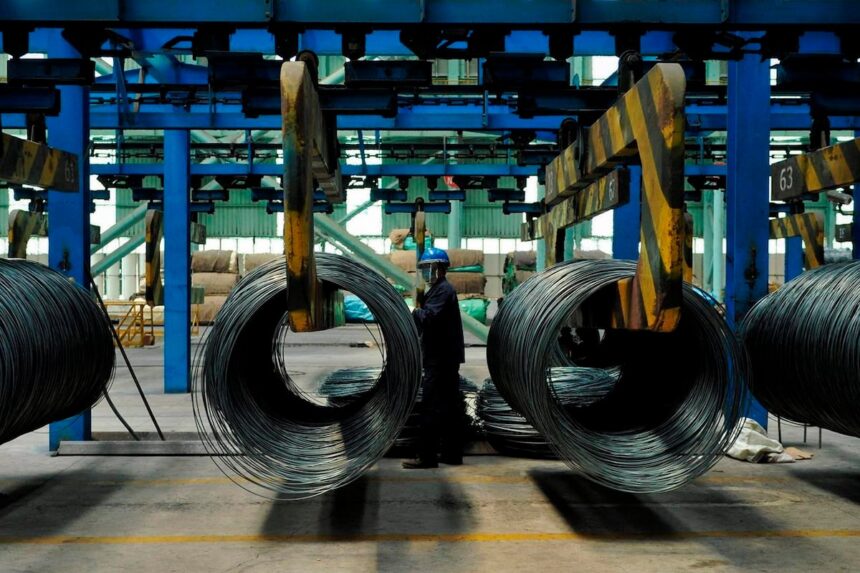As tensions flare across global trade, Canada’s move to impose safeguard tariffs on imported steel products has ignited a formal challenge at the World Trade Organization, with seven nations arguing the protectionist measures violate international trade rules.
The dispute, filed jointly by China, Turkey, South Korea, Vietnam, the UAE, Oman and Russia last week, represents the most significant pushback yet against Ottawa’s attempt to shield domestic steelmakers from what it describes as “unfair” foreign competition.
“This is essentially about Canada choosing between protecting its strategic industries and honoring its trade commitments,” says Peter Johnson, trade policy analyst at the C.D. Howe Institute. “The problem is trying to do both simultaneously without triggering this exact scenario.”
The safeguard measures, initially implemented in 2018 and extended several times since, impose tariffs of 25% on certain steel products that exceed historical import thresholds. The Canadian government has justified these actions as necessary emergency measures to prevent “serious injury” to domestic producers following global market disruption.
Finance Minister Chrystia Freeland defended the measures during a press conference in Toronto yesterday, stating that Canada “will not apologize for taking necessary steps to protect our steel sector from the harmful effects of global overcapacity and trade diversion.”
At the heart of the dispute lies the increasingly complex interplay between national security interests and trade obligations. Canadian steel producers, concentrated primarily in Ontario and Quebec, employ approximately 23,000 workers and contribute roughly $4.2 billion annually to the country’s GDP, according to Statistics Canada.
For Stelco Holdings and ArcelorMittal Dofasco, Canada’s largest steel producers, the safeguards have provided breathing room amidst volatile market conditions. Their quarterly earnings have shown modest improvements since the measures were introduced, with Stelco reporting a 14% increase in adjusted EBITDA in its most recent financial statements.
But the complainants at the WTO argue that Canada has failed to demonstrate that increased imports have caused or threatened to cause serious injury to domestic producers – a key requirement under WTO safeguard rules. They further contend that Canada’s repeated extension of what should be temporary emergency measures constitutes an abuse of trade remedies.
“The safeguards were designed as a pressure release valve during trade emergencies, not as semi-permanent barriers,” explains Meredith Crowley, international trade economist at the University of Cambridge. “Canada’s repeated extensions push the boundaries of what’s permissible under the WTO framework.”
China, which accounts for roughly 54% of global steel production, has been particularly vocal in its opposition. A statement from China’s Ministry of Commerce characterized Canada’s measures as “protectionism disguised as safeguards” and warned of potential retaliatory actions if the tariffs remain in place.
The dispute unfolds against a backdrop of broader economic tensions. Canada’s manufacturing sector has struggled with increased competition from lower-cost producers, while simultaneously facing pressure to reduce carbon emissions from steel production – a particularly energy-intensive process.
“What we’re seeing is a collision between old-world manufacturing concerns and new-world climate imperatives,” says Maryse Tremblay, research director at the University of Toronto’s Innovation Policy Lab. “Canadian steelmakers are caught in that squeeze, and tariffs offer temporary relief but not long-term solutions.”
The WTO challenge also highlights the dilemma facing middle powers like Canada in an era of growing economic nationalism. While the United States imposed similar steel tariffs citing national security concerns under Section 232, Canada has attempted to frame its measures within the WTO’s safeguard provisions – a distinction that now faces scrutiny.
For Canadian steel buyers – particularly in the construction, automotive, and energy sectors – the tariffs have translated into higher input costs at a time when inflation already squeezes margins. The Canadian Construction Association estimates that the steel safeguards have added between 5-8% to structural steel costs for major infrastructure projects.
“We’re essentially seeing consumers and downstream manufacturers subsidizing the protection of upstream producers,” notes Jordan Brennan, economist at Unifor, Canada’s largest private sector union. “That’s the trade-off policymakers have accepted.”
The WTO dispute settlement process typically takes 12-18 months to reach a ruling, though enforcement mechanisms have been hampered since the United States blocked appointments to the organization’s Appellate Body in 2019. This procedural reality may give Canada additional time to navigate the challenge.
Ottawa now faces difficult choices. It could modify the safeguards to better align with WTO obligations, phase them out gradually, or maintain them while preparing for potential authorized retaliation from the complainant countries if the ruling goes against Canada.
Meanwhile, Canadian steel producers argue that more fundamental reforms are needed to address global overcapacity, particularly regarding state subsidies and non-market practices that distort competition.
“Tariffs are a Band-Aid on a deeper wound,” says Catherine Cobden, president of the Canadian Steel Producers Association. “What’s really needed is coordinated action on overcapacity and carbon leakage if we want both free and fair trade.”
As the dispute moves through the WTO process, it underscores a broader question facing industrialized economies: how to balance the legitimate protection of strategic industries against commitments to the rules-based trading system that has underpinned global prosperity for decades.
For now, Canadian steelworkers in places like Hamilton, Sault Ste. Marie, and Contrecoeur will continue operating under the tariff shield – but with growing uncertainty about how long that protection will last, and at what diplomatic cost.






